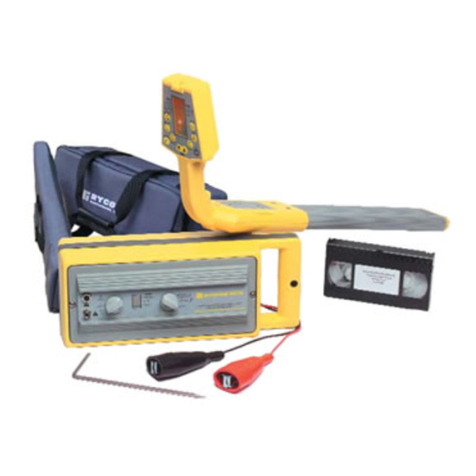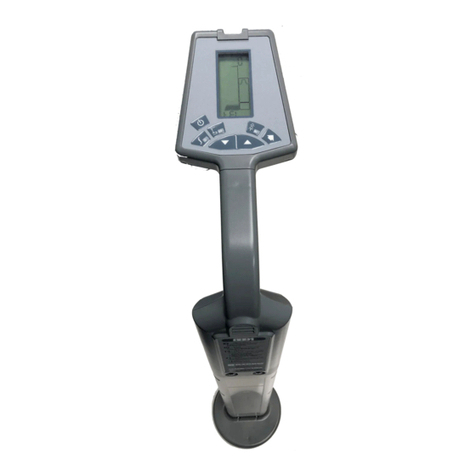
1.816.353.2100 www.rycominstruments.com
seleCting the traCing signal
The choice of frequency is dependent on the conditions of the locate. It is generally accepted
that lower frequencies provide a more accurate locate. Therefore it is generally advised to use
the lowest frequency that effectively conducts on the target line. Lower frequencies are less
likely to bleed onto adjacent non-target lines, but low frequencies are less effective at locating
higher-resistant conductors.
FREQUENCY RANGES
Frequencies are classified into three major categories, Low, Medium and High and they are
classified as follows:
• Low Frequencies < 1 kHz (1000 Hz) e.g. 512 Hz, 640 Hz, 815 Hz
• Medium Frequencies 1 kHz to 44 kHz e.g. 4 kHz, 8 kHz, 33 kHz
• High Frequencies 44 kHz to 480 kHz e.g. 65 kHz, 82 kHz, 200 kHz
FREQUENCY CHARACTERISTICS
The low, medium and high frequencies each have their advantages. It is recommended to
begin by using a low frequency, and continue as long as you are confident in the results. If the
signal is very weak try to adjust the connection or grounding. If there is no improvement in signal
then try mid-range frequencies. Again, if there is weak or absent signal, repeat adjustments of
the grounding and connection point before switching to a high frequency.
The method of signal application may dictate the frequencies used. While direct connection
can be performed on any frequencies, coupler induction will only work with medium and high
frequencies and transmitter induction will only work on the highest of the medium frequencies
(33kHz) and high frequencies.
Low Frequencies are usually preferred to the mid-range frequencies and high frequencies
because they are less susceptible to locating errors caused by coupling of signal to adjacent
conductors, cables or pipes. The low frequency locating range is also much longer than the
medium and high frequencies. Low frequencies will not travel well on highly resistive lines
or conductors that have interruptions in their continuity (e.g. disconnected shield bonds or
insulated pipe bushing). Low frequencies may only be applied via direct connection.
Medium Frequencies take the best of both high and low frequencies. Medium frequencies are
not as susceptible to bleed off or coupling as the high frequencies, and medium frequencies
can jump minor breaks in continuity and conduct on higher resistant lines better than low
frequencies. It is still best to use low frequencies whenever effective, but 8 kHz and 33kHz are of
the most common frequencies used in locating. Medium frequencies may be applied via direct
connection and via coupler induction [Note: 33kHz may be applied via transmitter induction].
High frequencies are sometimes better than the low frequencies for locating highly resistant
lines as well as conductors that have breaks in their continuity (e.g. disconnected shield bonds
or insulated pipe bushing). The locating range is quite short for the high frequencies so the
TransmiTTer must be repositioned more often during the tracing operation. High frequencies may
be applied via direct connection, coupler induction and transmitter induction.





























